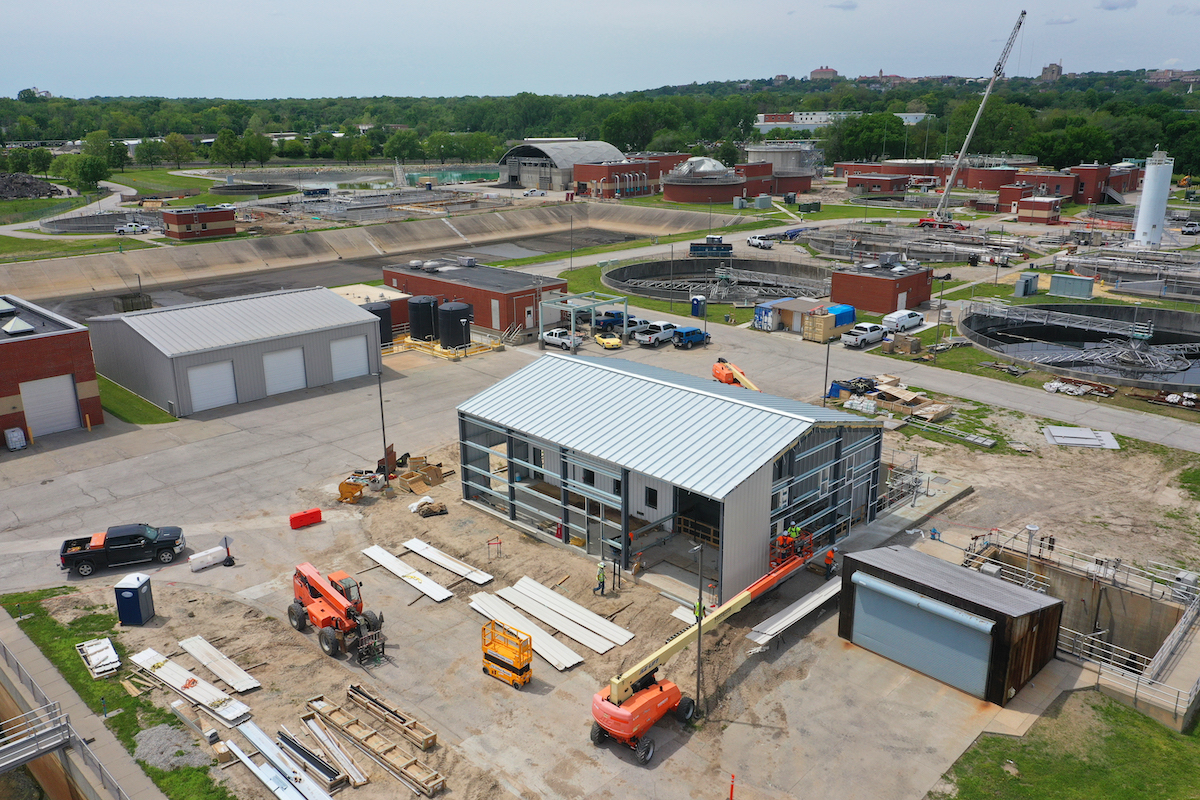“The adult inpatient hospitals of Michigan Medicine have consistently experienced high demand for inpatient rooms and surgical suites,” says Linda Larin, MBA, FACHE, Chief Operating Officer of University of Michigan Health Adult Hospitals. “This high demand has led to capacity constraints, impacting access for patients with high acuity and complex care needs.”
“Operating rooms are large and designed to accommodate the multidisciplinary teams caring for our most complex patients,” Larin says. “One of the OR floors designed for neurosurgery and spine care contains an MR-OR (intraoperative magnetic resonance imaging), two neurointerventional radiology suites, and an electrically silent OR room.”
A dedicated neuro critical care unit contains 24 beds. The hospital also will provide specialty care services for neurosciences, cardiovascular, and thoracic patients.
“The D. Dan and Betty Kahn Health Care Pavilion will be one of the most advanced hospitals in the United States for complex care, providing essential increased access for patients to receive the highest quality medical care from world-class providers,” says Tony Denton, JD, MHA, Senior Vice President and Chief Environmental, Social and Governance Officer at University of Michigan Health.

| Your local Takeuchi Mfg Ltd dealer |
|---|
| Kirby-Smith Machinery |
| Star Equipment LTD |
Philanthropists D. Dan and Betty Kahn’s foundation donated $50 million in support of the new hospital. That foundation has a 20-year history of giving to the University of Michigan.
The new hospital will include family spaces and collaboration areas. Levels 11 and 12 will have the additional capability to convert into two 48-bed Respiratory Infectious Containment Units.
A bridge and tunnel system will connect the new adult hospital to the University of Michigan Health Frankel Cardiovascular Center, which also connects to University Hospital.
HOK, of St. Louis, designed the project. IDS, of Troy, Michigan, is an associate architect; AEI, of Madison, Wisconsin, the mechanical and electrical engineer; and Beckett & Raeder, of Ann Arbor, the civil engineer.
“Our design provides a significantly enhanced patient experience, facilitates innovative research and creates an inspiring learning environment for medical training,” said Paul Strohm, Director of HOK’s Healthcare practice and principal-in-charge of the project, in a statement.
“Logistically, this project is challenging,” says Rob Rankin, Project Executive at Barton Malow. “The site is flanked by active traffic on Zina Pitcher Place and Ann Street, which have remained open during construction. In addition to the vehicular traffic, there is significant foot traffic around the jobsite to the medical campus and nearby dormitories. Flagmen are setup at all gates to ensure safe travel of pedestrians around the jobsite and to allow construction traffic to safely enter and exit the jobsite.”
Deep foundations with grade beams support the structure. The building also uses an earth retention system, with 2-foot diameter tangential piles to form the greater than 40-foot-high basement walls.
“The tangential piles were shotcreted, then waterproofing was applied to the shotcrete, then a single side concrete formwork system to cast the foundation,” Rankin explains.
The building features a steel frame, with 1 million pieces of steel, totaling 10,000 tons. The project topped off at the end of February.
JJ Curran Crane Company, a family-owned company in Detroit, provided the Liebherr 630 EC-H Tower Crane and an operator, Ted Fortier. Some of the steel pieces weighted 12,000 pounds, necessitating the large crane. JJ Curran used a wireless camera, so the operator could watch with an unobstructed view and hear from above as crews hook up the load for lifting and rig it.
The exterior consists of more than 1,000 pieces of precast concrete pieces and windows.
The mechanical, electrical, and plumbing trade partners participated in a building information model. They used that model to prefabricate in-wall rough in.
The project team aims for LEED Platinum building certification. The team estimates the hospital will exceed by 20 percent current State of Michigan energy efficiency standards.
“This will be achieved in a multitude of ways, including high-efficiency equipment with low pressure drops, operating room setbacks, and patient room perimeter heating,” Rankin says. “Additionally, there will be low-water fixtures, recycling of cooling tower makeup and sterilizer water, and low-wattage light fixtures with motion activation in appropriate areas. Ultimately, the project was able to demonstrate a 15 percent reduction in global warming potential while continuing to meet the demands of critical care.”
Barton Malow and its subcontractors signed a construction safety partnership with the Michigan Occupational Safety and Health Administration, designed to help keep workers safe. The company said in a release, the partnerships help “reinforce its commitment to continuous improvement and moves it closer to its overall goal to achieve zero lost time incidents, zero recordables, and zero first-aid incidents. “
Construction is scheduled to wrap up in Fall 2025. “We are proud to be at the forefront of innovation with a new hospital that will support the world-class work of the faculty, staff, and learners at Michigan Medicine,” Larin concludes.









































































